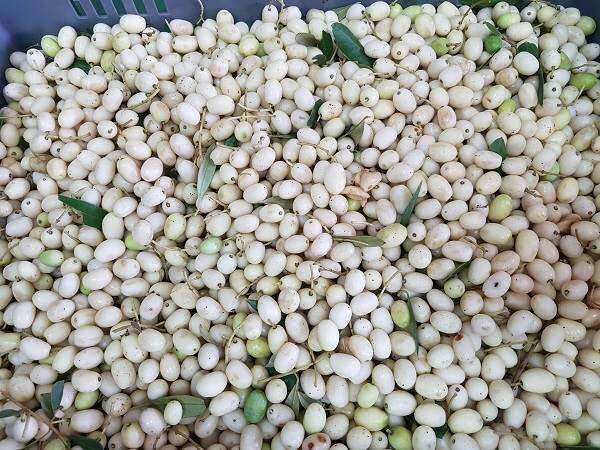Study reveals the nutritional properties of oil from Medes Islands wild olive trees


The oil from wild olive trees has excellent sensorial, physicochemical and stability characteristics from a nutritional point of view, according to an article published in the journal Antioxidants. The study, based on the analysis of fruits from wild olive trees of the natural reserve of the Medes islands, reveals that the parameters of the quality of oil are within the values the International Olive Council allows.
The study represents a first approach to the characterization of wild ivory-white olive trees in Catalonia, and it is led by Rosa M. Lamuela, professor at the Faculty of Pharmacy and Food Sciences of the University of Barcelona and the Physiopathology of Obesity and Nutrition Networking Biomedical Research Centre (CIBERobn). The study is also signed by experts from the Institute of Nanoscience and Nanotechnology of the UB (IN2UB), the Institute of Agrifood Research and Technology (IRTA), and the Institute for Research and Training in Agriculture, Fisheries, Food and Eccological Production (IFAPA). The study also counted on the participation of the Scientific and Technological Centres of the UB (CCiTUB), among other supporting infrastructures.
Wild olive: The wild variety of the cultivated olive
The wild olive (Olea europaea L. var Sylvestris) ―a tree from the oleaceae family―is the ancestor of the olive tree (Olea europaea L. subsp. europaea), cultivated from ancient times in order to get oil. Now, the commercial use of the fruit of the wild olives is seldom used in the food industry, although some peninsular regions use it to make great ecological quality oil.
So far, there was not much information about the phenolic profile of wild ivory-white olives. “The fruit from the olive is featured for its low oil content. However, they have unique features as white fruits with a high content in phenolic elements that could have an effect within the required parameters by the European Union, to have a claim on health (protection of low-density lipoprotein from oxidative damage),” notes Professor Lamuela, director of the Institute for Nutrition and Food Safety (INSA)—located in the Food and Nutrition Torribera Campus—and head of the Research Group on Natural Antioxidants of the UB.
In the Medes islands, the wild olive has grown under conditions that were marked by the Mediterranean climate and its geological environment (hydric stress, salinity, etc.). “In particular, the phenolic profile of the oil is higher than the one described up to date in a genotype of wild olives in Algeria. This is why we might be in front of genotypes that could be used for food purposes and in programs for the improvement of the traditional olive tree,” adds the UB professor.
The organoleptic properties of olive oil from olive trees are similar to those of commercial olive varieties. “This is due to the fact that both oils have similar concentrations of oleocanthal and oleacein, two phenolic compounds that cause perceptions such as itching and bitterness,” say researchers Anallely López-Yerena (INSA-UB) and Antonia Ninot (IRTA), first signatories of the article.
Wild olives: protecting the natural heritage and promoting local cultivation
The sector of olive oil has made a significant effort to optimize the process of extracting olive oil in order to maintain a balance between economic performance and oil quality. For twenty years, the renewal of olive groves has favored the use of some varieties―Picual and Arbequina―that dominate olive tree groves throughout the country. This practice excludes the agronomic use of many local varieties, which involves a high risk of losing plant diversity.
In this scenario, the olive trees represent a potential example of resilience and adaptation to adverse agronomic conditions. Today, we can still find forests of wild olive trees in southern Spain (Andalusia), as well as genuine wild forms scattered―especially in disturbed areas or abandoned fields―in areas of the Valencian Community and Catalonia.
The new study is part of a program on cultivated biodiversity aimed at preventing the alarming loss of genetic diversity and promoting the use of local crops. In this framework, the ongoing activities are aimed at the prospection and harvesting of olive populations in Spain, in order to assess their genetic variability and study the potential application in future programs on olive improvement.
Source: Read Full Article